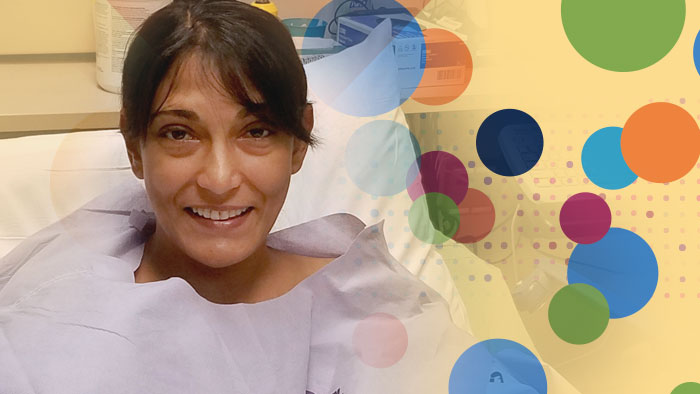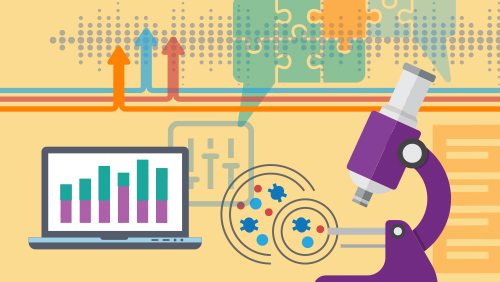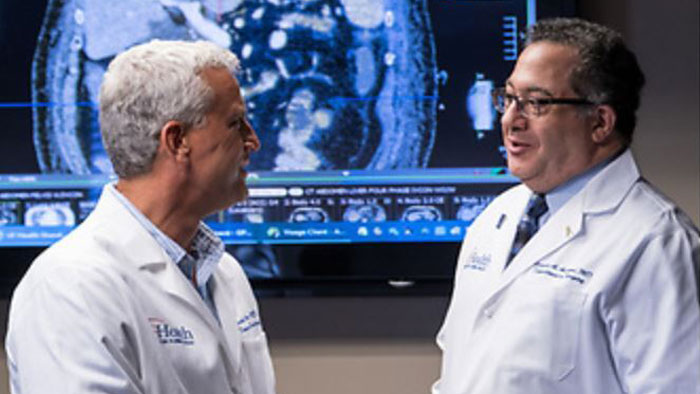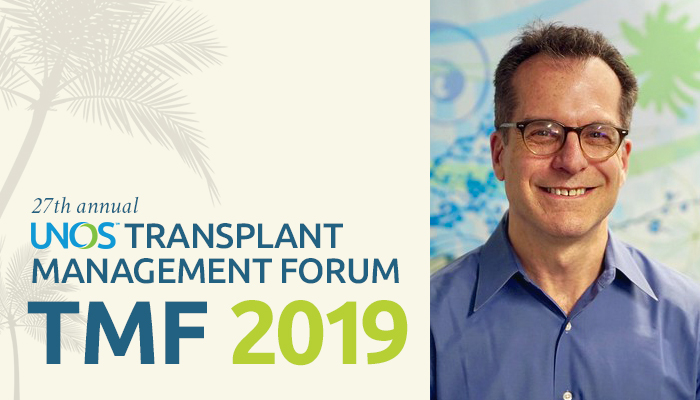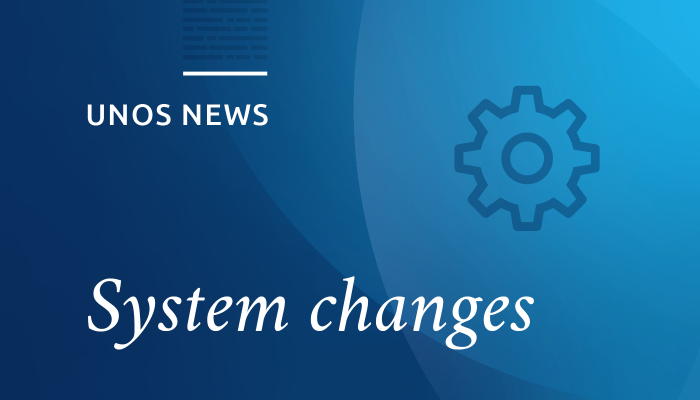
Innovation
Better organ offer screening
A pilot project tests ways to avoid unwanted organ offers, accelerate organ allocation and transplant more organs.
Some organ transplant programs field many thousands of organ offers in a year, but might accept only a few hundred for their patients. In June, United Network for Organ Sharing launched the first phase of a pilot project to develop an innovative tool that will help change that by altering how offers are filtered. The goal? Increase kidney utilization by helping organ procurement organizations (OPOs), find an accepting candidate more quickly.
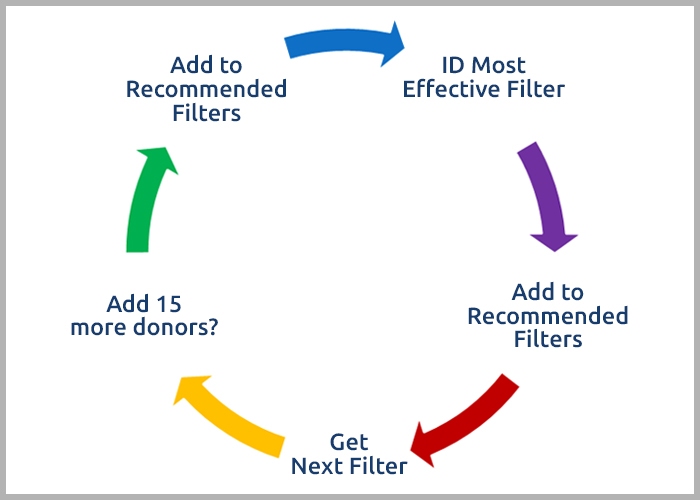
To identify a program’s recommended filters, the model first finds the most effective offer filter for the kidney program. The most effective filter is the one that screens off the most donors.
The offer filters tool will allow transplant hospitals to filter out donor offers they do not want to receive by creating custom-designed, multi-criteria filters, said UNOS business architect Rob McTier, who helms the project along with UNOS principal research scientists John Rosendale and Darren Stewart and UNOS data scientist Harris McGehee. Hospitals will also be able to select model-derived filters UNOS generated by applying data science to identify consistent organ offer refusal patterns. “You don’t have to worry about there being overlap between any filters,” McTier said. “If it meets one of your filters or all of your filters, you won’t get any offers for the organ.” Reducing unwanted organ offers reduces cold ischemic time and promotes increased utilization overall.
OPOs will also play a part in the pilot by reporting cross-clamp date and time, warm ischemic time, and kidney biopsy information when making electronic organ offers on kidney matches.
The pilot is a collaborative effort among the transplant community and UNOS, and has been years in the making. In preparation, a work group comprised of representatives from transplant hospitals and OPOs around the country was formed, and staff from the 29 participating transplant hospitals reviewed modeling data to set their offer filters.
“That modeling data is a new way of understanding acceptance practices,” said McTier, adding that dialogue among UNOS researchers and participants about filters was an effective way for transplant programs to understand their decisions.
Offer filters chosen, evaluated, but remain off: Phase 1
On June 17, UNOS launched the first phase of the pilot with 29 kidney programs from across the country. Participants used a tool called Offer Filters Explorer to select criteria to screen out kidney donor offers they did not want to receive. Though the selected filters did not actually screen offers during this phase, UNOS Information Technology Departments’ team members tracked whether each organ offer would have been screened if the filter was turned on. The filter information was displayed when a program received a kidney offer. The filters were set at the hospital level so they applied to all candidates at the kidney transplant programs.
“UNOS Research Department has completed their analysis of the offer filters pilot project phase one data and we are in the process of reviewing the pilot participant feedback,” McTier said in December, adding that the team is using the phase one data to begin planning for phase two.
Chosen filters turned on to screen organ offers: Phase 2
The project is iterative and will include more participants and options as time goes on. In phase two, transplant hospitals will be able to turn their offer filters on and off. When a filter is active, the filter criteria will be compared with donor data before electronic offers are sent. When the OPO initiates the electronic organ offer notification process, a bypass code will be applied to all candidate offers where the donor data meets the filter criteria and the filter is active.
Candidate-level factors added
Phase two will also give transplant hospitals the ability to customize filters and exclude candidates from filters based upon criteria CPRA, or calculated panel reactive antibody, candidate age, and zero-antigen mismatch.
Read more about the offer filters pilot project, and watch unos.org for regular updates.
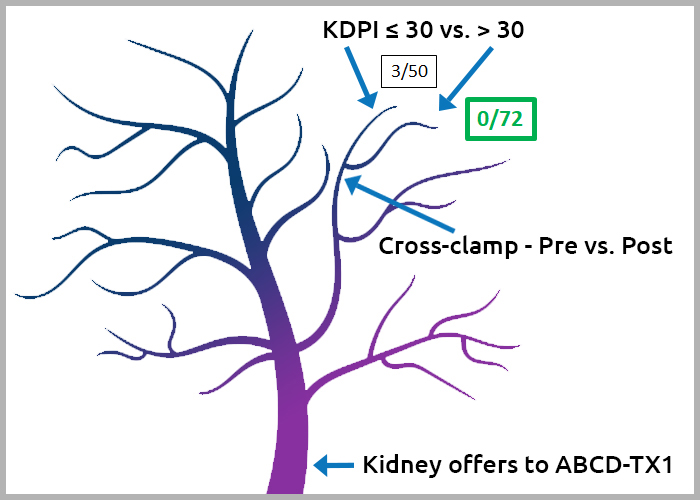
The model uses a data science method called recursive partitioning. It evaluates all combinations of donor factors and applies a kidney program’s last two years of offers to find potentially effective offer filters. These combinations are like the branches of a tree.
Originally published June 28, 2019.
More ways UNOS is working to increase organ utilization
Increasing the use of high KDPI kidneys through COIIN
The three-year Collaborative Innovation and Improvement Network (COIIN) — begun in 2015 and directed by the Health Resources and Services Administration for the Organ Procurement and Transplantation Network — sought to increase the transplantation of marginal or high Kidney Donor Profile Index, or KDPI, kidneys, and explore new methods of quality monitoring. What were the results? Learn more here.
Creating the first national donor image sharing hub
A medical image sharing pilot project underway now at UNOS may soon give OPOs and transplant hospitals, universal access to high-quality medical imaging studies during the organ offer process. Creating a consistent, reliable and secure national image sharing system has the potential to decrease the number of organs that are not used and increase the number of transplants overall. See how it works.
Improving organ placement processes in DonorNet®
In 2018, a project to improve organ offer and acceptance process resulted in changes to DonorNet® and policy, including reducing the current time limits for responding to organ offers from two hours to one hour and limiting the number of organ offer acceptances to two. Read more here.
The pilot is a collaborative effort among the transplant community and UNOS, and has been years in the making.


